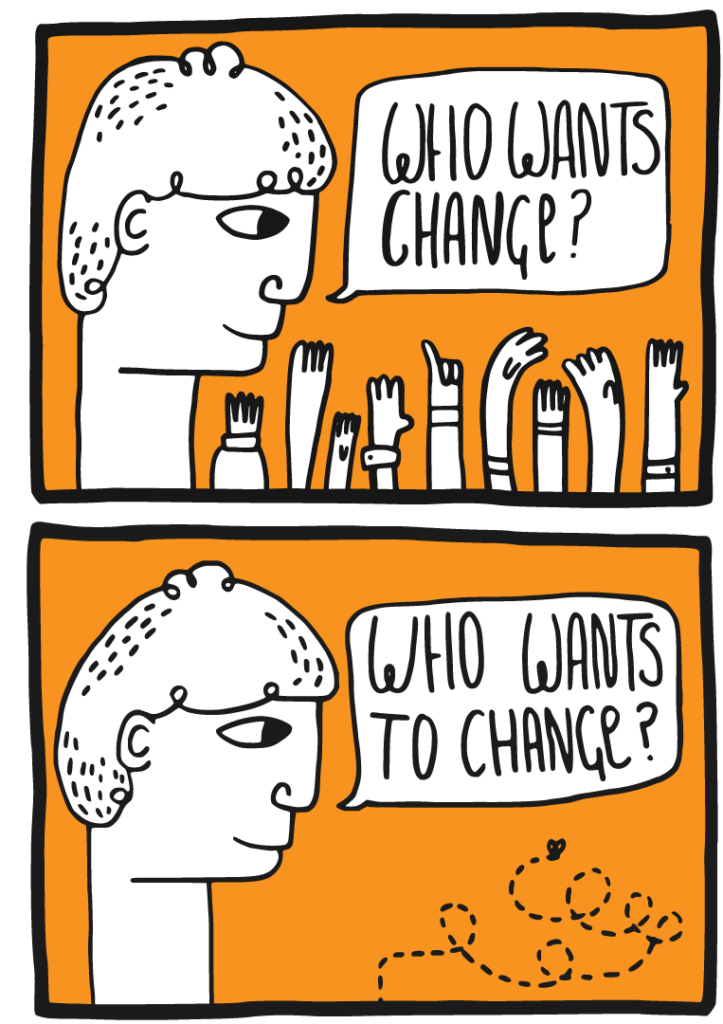As I have been working on my MLS, several themes have come, and gone, and returned again. How to structure a reference interview. Why communication is important. The importance of strong leadership. This month’s theme seems to be change management.
I first noticed it at the beginning of the month: some colleagues presented at a local (virtual) conference on chat services and remote reference. The final speaker, Ms. Heuer, used her time to discuss the challenges of change management, whether they are how much time it takes, the culture of the organization, how to communicate such change, or when to celebrate progress (2020).

A couple of weeks later, as I began my readings for this class, change was front and center: in Buckland’s (1997) discussions of change at libraries, in Mathews’ (2012) vision of librarians as entrepreneurs, and in Casey and Savastinuk’s (2007) detailed descriptions of the library as change leaders. As libraries settle into the technological future described by Buckland, Mathews urges librarians to seek disruption and innovation rather than complacency. As he notes in his second point, “Change is the new normal. Change is the only constant,” (p. 3).
Mathews argues that innovation and assessment should be a continual part of any library’s business plan. This ties directly to Casey and Savastinuk’s (2007) framework for change in Chapter 4. Casey & Savastinuk refer to it as Investigation, Planning and Review (p. 53); Mathews describes it as Build, Measure, and Learn (p. 6). Same thing, just more succinct. The point is that change is built into the culture and daily life at the library, embracing innovation instead of fighting it.
And this morning, I pulled up yet another article for my other class (on Academic Libraries), advocating for a change culture at the library. While Lakos & Phipps (2004) are arguing more for strategic change, and their approach is more structured than what Mathews (2007) suggests, they are still advocating to assess a library’s programs regularly, in order to determine what new programs are needed and what programs should be discontinued. Like Mathews and Casey & Savastinuk (2007), Lakos & Phipps note that a culture of embracing change is essential for this to be successful; when describing key indicators of success, they note that “the success of change is very much dependent on the management of cultural transformation,” (p. 347).
The idea of change at the library is not new. Ranganathan noted that “The library is a growing organism” in 1931 (cited by Gorman, 1998). Libraries have been growing and adapting for centuries now. The last few months have proved the flexibility and ability of libraries to offer both synchronous and asynchronous services virtually. Hopefully we librarians will come out of the pandemic (after a good nap) empowered to embrace Mathews’ (2007) challenge to “use our imaginations to dream big and create amazing experiences that transform our users,” (p. 11).
References
Buckland, M. K. (1997). Redesigning Library Services: A Manifesto. American Library Association.
Casey, M. E., & Savastinuk, L. C. (2007). Library 2.0: A Guide to Participatory Library Service. Information Today, Inc.
Gorman, M. (1998). The five laws of library science, then and now. School Library Journal, 44(7), 20-23.
Graff, R., Heuer, M., & Jenkins, S. (2020, August 7). Remote reference: A practitioner’s guide. [Virtual conference presentation]. Cross Timbers Library Collaborative Conference, Denton, TX. https://twu-ir.tdl.org/handle/11274/12403
Lakos, A., & Phipps, S. E. (2004). Creating a culture of assessment: A catalyst for organizational change. portal: Libraries and the Academy, 4(3), 345-361. https://doi.org/10.1353/pla.2004.0052
Mathews, B. (2012). Think like a startup: A white paper to inspire library entrepreneurialism [White paper]. Virginia Tech. https://vtechworks.lib.vt.edu/handle/10919/18649